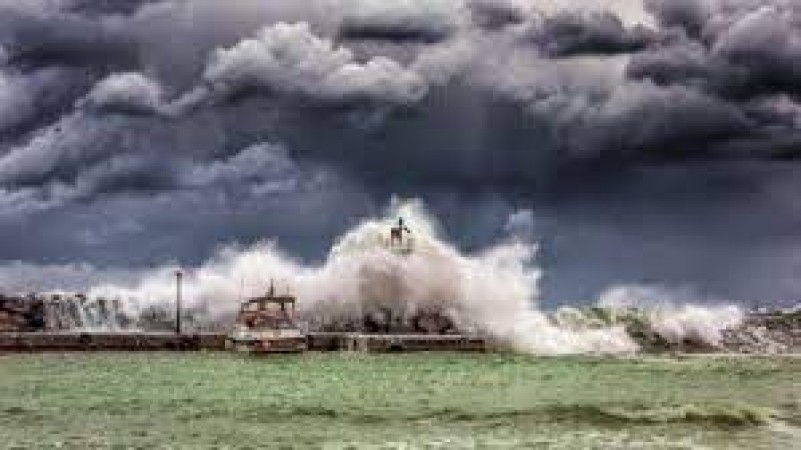
Tsunamis are natural disasters that can strike without warning, causing devastating consequences to coastal communities. Being prepared for such an event is crucial for ensuring the safety and well-being of individuals and their families. In this article, we will explore the essential steps to prepare for a tsunami, from understanding the phenomenon to developing a comprehensive preparedness plan.
Understanding Tsunamis
What is a Tsunami?
A tsunami is a series of large ocean waves generated by sudden disturbances, such as earthquakes, volcanic eruptions, or underwater landslides. These waves can travel across entire ocean basins, carrying enormous amounts of energy and striking coastlines with tremendous force.
Causes of Tsunamis
Tsunamis can be triggered by various natural events, but the most common cause is an undersea earthquake. When the seafloor abruptly rises or falls due to tectonic activity, it displaces a massive volume of water, initiating a tsunami.
Warning Signs
Before a tsunami strikes, there are some warning signs to be aware of, such as the rapid and unusual recession of ocean water, a noticeable earthquake, or the sounding of tsunami warning sirens. However, not all tsunamis come with warning signs, so it's essential to be prepared at all times.
Preparing Before a Tsunami Strikes
Know the Evacuation Routes
Familiarize yourself with the designated evacuation routes in your area. Local authorities will provide these routes, which lead to higher ground and safer locations away from the coast.
Establish an Emergency Kit
Assemble a well-stocked emergency kit that includes essential items such as non-perishable food, water, first aid supplies, a flashlight, extra batteries, and important documents. Keep the kit in an easily accessible place.
Secure Your Property
If you live in a coastal area, take measures to secure your property against potential tsunami damage. Elevate your home, anchor fuel tanks, and retrofit buildings to withstand the impact of powerful waves.
Develop a Family Communication Plan
Create a communication plan with your family members or household members. Establish a point of contact outside the tsunami-affected area that everyone can reach to check in and provide updates.
During a Tsunami
Follow Evacuation Orders Promptly
If a tsunami warning is issued or you notice any warning signs, do not hesitate to evacuate immediately. Tsunamis can strike within minutes after an earthquake, leaving little time for response.
Stay Informed
Keep yourself updated with the latest information through local media, emergency alerts, and official sources. Avoid spreading unverified information that may cause panic.
Move to Higher Ground
Head to higher ground or inland as quickly as possible. The goal is to reach an area that is at least 100 feet above sea level or as far inland as possible.
Avoid Hazardous Areas
Stay away from beaches, harbors, and river mouths during a tsunami warning. Do not return to the coastal area until authorities declare it safe to do so.
After a Tsunami
Wait for the All-Clear
Even after the initial wave passes, there may be subsequent waves. Wait for official confirmation that the threat has passed before returning to your home or business.
Exercise Caution When Returning Home
Upon returning home, be cautious of debris and potential hazards. Do not enter damaged buildings until they have been inspected and deemed safe.
Contact Loved Ones
Reach out to friends and family members to let them know you are safe. Reconnect and provide support to those who may have been affected by the tsunami.
Assist in Community Recovery Efforts
Participate in community recovery efforts, such as cleanup and relief initiatives. Working together, communities can recover more effectively from the impact of a tsunami.
Tsunami Preparedness for Coastal Businesses
Have an Emergency Response Plan
Businesses operating in coastal regions should have a well-documented emergency response plan in place. This plan should include evacuation procedures and protocols to secure valuable assets.
Secure Important Documents and Data
Backup and protect important business documents and data. Storing essential records in secure off-site locations ensures their availability after a disaster.
Train Employees for Tsunami Preparedness
Educate employees about tsunami preparedness and conduct regular drills to ensure everyone knows how to respond appropriately during an emergency.
Tsunami Preparedness for Schools
Conduct Tsunami Drills
Schools located in tsunami-prone areas should conduct regular tsunami drills to prepare students and staff for a potential disaster.
Implement Safety Measures
Implement structural safety measures in schools to ensure they can withstand the impact of a tsunami, providing a safe refuge for students and staff.
Ensure Emergency Communication
Establish reliable communication channels to quickly disseminate information to students, parents, and staff during a tsunami warning.
The Role of Technology in Tsunami Preparedness
Tsunami Early Warning Systems
Advancements in technology have led to the development of tsunami early warning systems that can detect earthquakes and issue timely alerts to at-risk communities.
Mobile Apps and Alerts
Mobile apps and emergency alert systems play a significant role in delivering real-time information and instructions during a tsunami event.
Learn from Past Tsunami Incidents
Case Studies of Successful Preparedness
Studying successful tsunami preparedness efforts in different regions can provide valuable insights and best practices for others to follow.
Lessons Learned from Tragic Events
Analyzing past tsunami disasters can help identify areas of improvement and enhance future preparedness strategies.
The Global Effort in Tsunami Preparedness
International Collaboration
Tsunami preparedness requires collaboration between nations to share knowledge, resources, and expertise for more comprehensive disaster management.
Supporting Vulnerable Communities
Efforts to prepare vulnerable communities for tsunamis are essential to minimize the impact on lives and property. Being prepared for a tsunami can make a life-saving difference when facing this formidable natural disaster. Understanding the causes, warning signs, and following the outlined steps for preparedness can significantly increase your chances of staying safe during a tsunami event. Remember, preparedness is a collective effort, and everyone has a role to play in building resilient communities.
Boost Your Productivity: The Pomodoro Technique Demystified